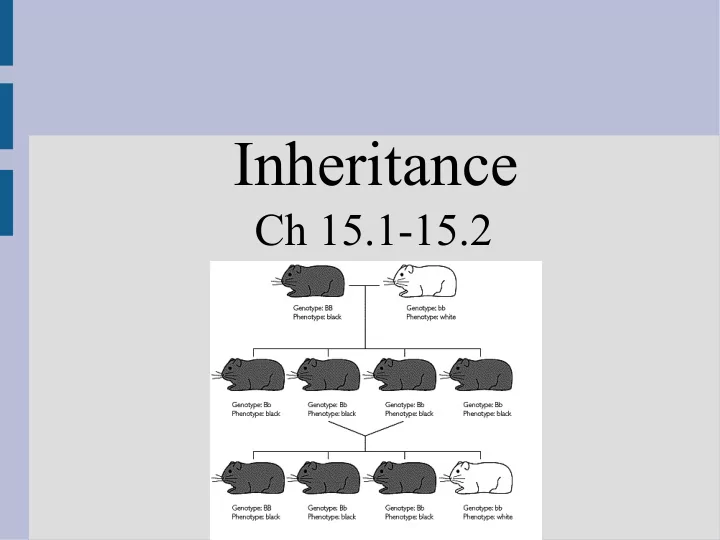

Inheritance Ch 15.1-15.2
Highlights - Creating parent/child classes (inheritance)
Story time
Story time
Story time
Story time
Story time
Derived classes Let's make this story into code! To create create a child class from a parent class, use a : in the (child) class declaration child class parent class (See: dunecat.cpp)
Derived classes In a parent/child class relationship, the child gets all variables and functions of the parent This allows you to build off previous work, even if you need to modify it slightly This also makes it easier to maintain code, as changing it in the parent class can effect all children (and the children's children)
Derived classes Typically you use classes when you have multiple objects that are somewhat similar You group the similar parts into a parent class and the different parts into children classes For examples all chairs have a flat surface to sit on, but they come in different designs (folding types that you are sitting on) (or rolling types)
Derived classes Parent: (Internal combustion engine) Children:
AD&D example
Phone
Finding similarities Consider these two sports: If you were going to create a C++ class for these, what data would you store in them? (see: sports.cpp)
Finding similarities Consider two classes you have made already: Point Complex You can have a single parent of both of these that stores the similar parts This means you only need to type the code once for both classes (See: complexPoint.cpp)
Types + inheritance What type of object is “soccer”? It is (obviously) a “soccer”, but could it also be classified as “sports”? In fact, yes... both of these are legal: “soccer” have more functionality than “sports” (extra stuff), so they can act as one (just pretend some boxes aren't there)
Types + inheritance The reverse is not true (as we are using them): You cannot say: As the “worldCup” variable has more info than the “fun” variable (the computer refuses to just guess at the missing functions/data) (see: convertClassTypes.cpp)
Recommend
More recommend